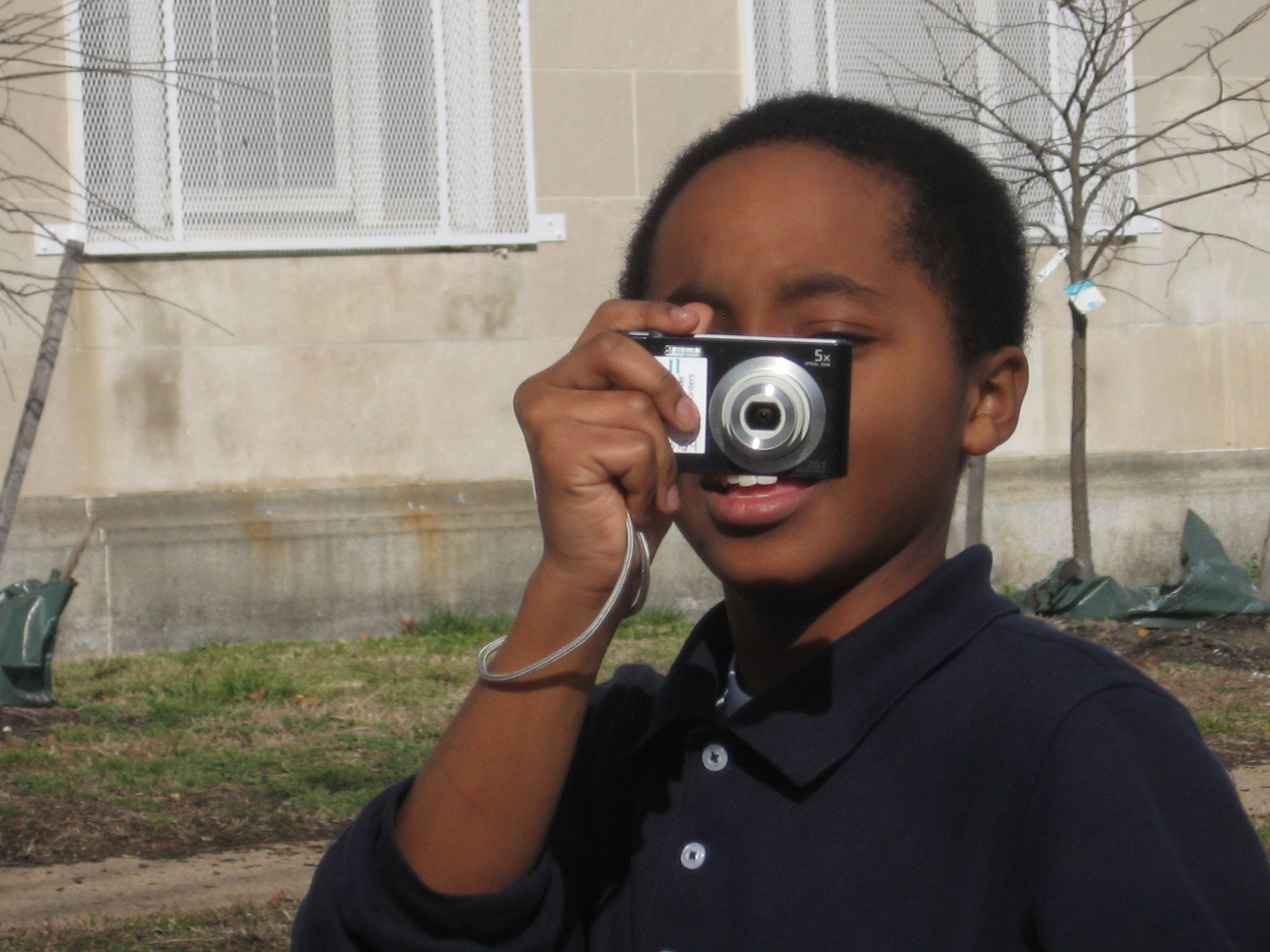Note to educators: This is the third of seven lessons in the Everyday DC unit, and all seven lessons can be found here.
Objective:
Students will be able to identify and practice photographic techniques.
Warm-up: What makes a photo stand out?
- Use the following video, and images from Everyday Africa or Everyday DC, to review how journalists take different kinds of photos to tell stories: portraits, landscape/establishing shots, action shots, and details.
- Select 3-5 photos from the Everyday Africa project, and ask students to discuss what stands out to them about each image. Ask them to respond to the following:
- What do you see?
- What story do you think the image is telling about this place?
- What stands out in the image? What pops, or just looks cool to you?
Introducing the Lesson: Exploring Photography Techniques
- Review the following video from photojournalist Allison Shelley, who uses images she contributed to the Everyday Africa project to share the following photography techniques that photojournalists can use to help their photos stand out:
- Color
- Light/Silhouette
- Repeating Elements
- Framing
- Angle (including "bird's eye" and "worm's eye" views)
- Using additional images from the Everyday Africa or Everyday DC projects, students evaluate how photojournalists use different tools to communicate underreported stories about their communities:
- Focus on angles and how different angles change how a subject is perceived (“bird’s eye,” low level, high level, tilted, “worm’s eye”)
- Focus on how lighting and shadows are composed in the photo
- Investigate framing, including rule of thirds, examining how what is included/not included in a photo can change the story that the photo is telling.
Extension Activity: Practicing Photography Techniques
- Students practice using each of the above techniques in the classroom. Take 5 minutes to practice each of the following:
- Portraits, landscape/establishing shots, action shots, and details
- Photos from different angles
- Photos with different compositions using lighting and shadow
- Photos employing different framing techniques
- By the end of class, students turn in four photos. Each photo should reflect one of the above skills. Optional: Students can also do this at home, if desired.
- Tip for teachers: Educators in Washington, D.C. found that it helped to spread this lesson out over several days, and to change the location each day.

Students practice photography techniques. Washington, D.C. 2020
Assessment:
Sample rubric:
|
Standard |
Exceeds Expectation |
Meets Expectation |
Needs Improvement |
|
VA:Cr1.1.8: Document early stages of the creative process visually and/or verbally in traditional or new media. |
|
|
|
This lesson plan adapts exercises and activities developed as part of the Everyday DC unit, which was written by Pulitzer Center and D.C. Public Schools. Here is the original PDF for this lesson, which was designed by Fareed Mostoufi (Pulitzer Center on Crisis Reporting) & Andrew Westover (DCPS).
This photography and curation unit is inspired by the Everyday Africa project created by journalists Peter DiCampo and Austin Merrill and supported by the Pulitzer Center on Crisis Reporting. Everyday Africa, a collection of images shot on mobile phones across the continent, is an attempt to redirect focus toward a more accurate understanding of what most Africans experience on a day-to-day basis: normal life.
The Everyday DC cornerstone unit is an opportunity for students to apply photography, photo analysis, and investigative reporting skills to the creation of photo essays that reflect their everyday realities as residents of Washington D.C. Students will create group photo exhibitions that they feel accurately and responsibly represent their communities. Participating schools had the opportunity collaborate with DCPS and the Pulitzer Center to select students who will help curate a district-wide Everyday DC exhibition featuring images from all schools participating in the unit. For support creating a photojournalism project with your students, contact [email protected].
DCPS Standards:
Document early stages of the creative process visually and/or verbally in traditional or new media.
Additional Resources:
For an easily accessible PDF containing images from Everyday Africa, please click here.
For a PDF containing images from last year's Everyday DC exhibition, please click here.
